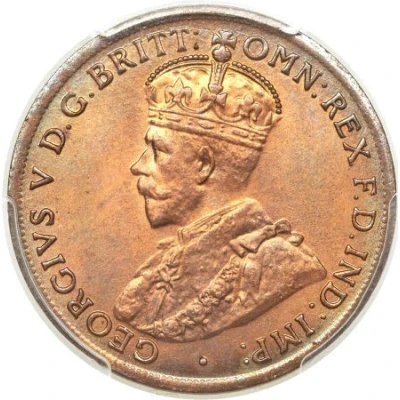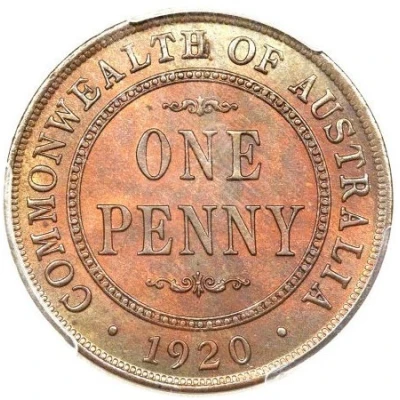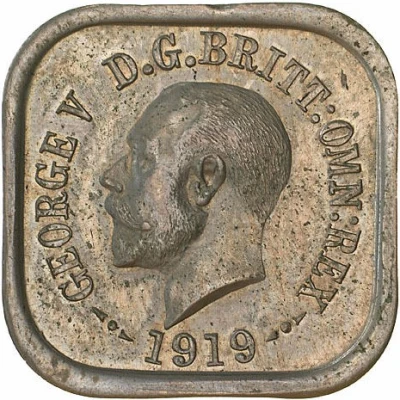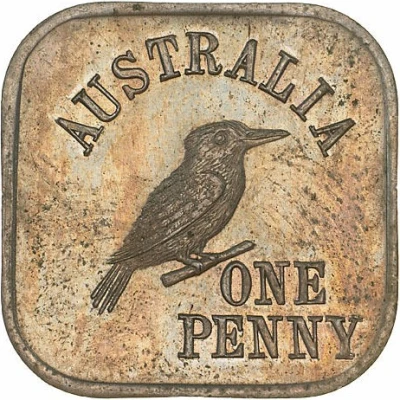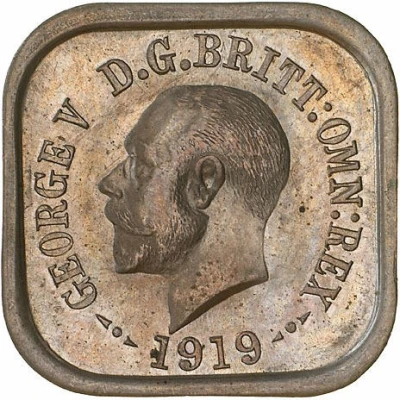
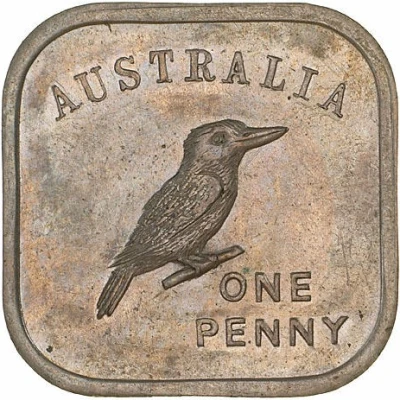

© Museums Victoria
1 Penny - George V Kookaburra Pattern - Type
1919 year| Copper-nickel | 4.02 g | - |
| Issuer | Australia |
|---|---|
| King | George V (1910-1936) |
| Type | Pattern |
| Year | 1919 |
| Value | 1 Penny (1⁄240) |
| Currency | Pound (1788-1966) |
| Composition | Copper-nickel |
| Weight | 4.02 g |
| Size | 18 mm |
| Shape | Square with rounded corners |
| Technique | Milled |
| Orientation | Medal alignment ↑↑ |
| Demonetized | Yes |
| Updated | 2024-10-04 |
| Numista | N#124653 |
|---|---|
| Rarity index | 95% |
Reverse
A small kookaburra with a longer and thinner perched on a short section of branch
Script: Latin
Lettering:
AUSTRALIA
ONE
PENNY
Edge
Plain
Comment
Type: M3 / R3Dies prepared by the Royal Mint, London
Between 1919 and 1921 a series of experiments were undertaken for a square coinage in nickel to replace the large bronze penny and halfpenny coins.
Interesting fact
One interesting fact about the 1919 Australian Kookaburra Pattern Penny is that it features a unique reverse design that was never used on any other coin. The Kookaburra, a native Australian bird, was chosen as the central motif for the coin's reverse, and it is surrounded by a wreath of eucalyptus leaves. This design was created by artist and sculptor, Edgar Bertram MacKennal, and it is considered one of the most iconic and recognizable coin designs in Australian numismatics.
